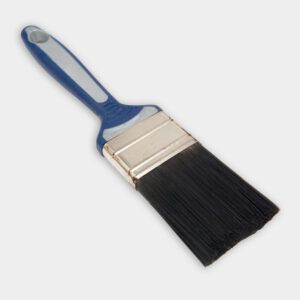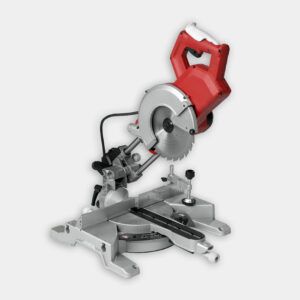We may be compensated if you purchase through links on our website. Our team is committed to delivering honest, objective, and independent reviews on home products and services.
Project details
Skill
Cost
Estimated Time
Creating a custom headboard can transform your bedroom’s aesthetic while showcasing your DIY skills. A rough-sawn headboard offers a rustic yet stylish touch that complements various decor styles. In this video and guide, This Old House general contractor Tom Silva demonstrates how to construct a rough-sawn headboard using readily available materials.
*Unless otherwise noted, costs in this article reflect an average of prices that our team found from hardware stores like Lowes and Home Depot, and on Amazon.com.
Materials Needed for a Rough-Sawn Headboard
Before diving into the construction process, gather the following materials:
- 1/2-inch birch plywood
- Rough-sawn hardwood boards (1/2-inch x 4-inch)
- 2×4 lumber
- 5/4-inch pine board
- Wood glue
- Construction adhesive
- Framing screws
- 1-inch brad nails
- Black paint
- Weathered wood finish
Tools Required for a Rough-Sawn Headboard
To complete this project efficiently, you’ll need these tools:
- Paintbrush
- Track saw
- Miter saw
- Drill/driver
- Caulk gun
- Brad nailer
Preparing the Base of a Rough-Sawn Headboard
The first step in creating your rough-sawn headboard is preparing a sturdy base. This foundation ensures the finished product is both durable and visually appealing.
Paint the Plywood
Begin by painting a large sheet of birch plywood black. This step is necessary as it helps conceal gaps between the rough-sawn boards, creating a shadow effect that enhances the rustic appearance. Allow the paint to dry completely before proceeding.
Cut and Reinforce the Plywood
Once the paint has dried, use a track saw to cut the plywood to the desired size for your headboard. To add stability, reinforce the plywood by attaching 2×4 lumber to the back using wood glue and framing screws. This step helps prevent warping and ensures your headboard remains flat against the wall. The key is to balance both functionality and aesthetics.
Laying Out the Rough Sawn Boards
With the base prepared, it’s time to create the visually striking front of your headboard using rough-sawn boards.
Arrange the Boards
Start at the top of the plywood and work your way down, allowing the first board to overhang slightly at the top. Use a miter saw to cut any overhanging pieces, which can be reused in the next course depending on their length. Ensure that the joints of the boards do not line up, as this adds to the rustic aesthetic. Be mindful of creating an organized yet random pattern that looks natural.
Secure the Boards
Apply construction adhesive to the back of each board before placing it on the plywood. Use a brad nailer with 1-inch pins to secure the boards. This combination of adhesive and nails ensures a strong bond while allowing for the natural expansion and contraction of the wood. It’s important to ensure each board is firmly attached, so the finish is clean and secure.
Enhancing the Design of Your Headboard
With the rough-sawn boards in place, you can further embellish the design to suit your taste.
Create a Pattern
Experiment with creating a pattern using boards of varying sizes. This not only adds to the visual interest but also gives you a chance to infuse a personalized touch. Play around with color contrasts, perhaps by integrating different stains or paints to offer depth and a unique look.
Texture the Surface
Giving a textured finish to certain sections can add an additional rustic element. Brushing or sanding some parts lightly can create inconsistencies that enhance the aged appearance. Choose areas carefully to maintain structural integrity while adding character.
Finishing Touches for a Rough-Sawn Headboard
The final steps in creating your rough-sawn headboard involve trimming excess material and adding a polished top piece.
Trim the Edges
Once all boards are in place, use the track saw to make clean cuts on both ends of the plywood, ensuring straight and even edges. Even edges provide a professional appearance and prevent any splinters or mishaps.
Create the Return
To add depth to the headboard, create a return on each side. Make two opposing miter cuts on each side, starting with the outside cut. This step allows the side pieces to wrap around, giving the headboard a more finished look. It is also a chance to showcase precision in craftsmanship.
Add the Top Piece
Cut a piece of 5/4-inch pine to size for the top of the headboard. Apply a weathered wood finish to match the rest of the boards. Once dry, attach the top piece to the headboard from underneath using framing screws. This top piece adds an elegant cap to the overall design.
Installation Options for Rough-Sawn Headboards
Your new rough-sawn headboard can be installed in versatile ways to fit different room setups:
- Wall-mounted: Secure the headboard directly to the wall studs using appropriate anchors and screws. This provides a sturdy setup that remains fixed in place.
- Bed frame-attached: If using a metal bed frame, you can attach the headboard directly to the frame using bolts or brackets. This method adjusts easily and complements the bed structure.
- Freestanding: For a more versatile option, you can create legs for the headboard, allowing it to stand independently behind the bed. Freestanding headboards are excellent for those who love flexibility in room arrangement.
Customization Ideas for Rough-Sawn Headboards
While the basic construction remains the same, you can personalize your rough-sawn headboard through imaginative choices:
- Experiment with different wood stains or paint colors to match your bedroom decor. Play with gradients and shades for a more cohesive look.
- Add LED lighting behind the headboard for a soft, ambient glow. This can create a cozy atmosphere while illuminating textures.
- Incorporate metal accents or hardware for an industrial touch. It provides a modern edge that contrasts beautifully with the rustic wood.
- Vary the width of the boards used for a more eclectic look. This variation can give a playful and artistic flair, especially in a contemporary setting.
Our Conclusion
Building a rough-sawn headboard is a rewarding DIY project that adds character and warmth to any bedroom. With basic woodworking skills and the right materials, you can create a custom piece that rivals high-end furniture stores. This project not only saves money but also allows for personal expression in your home decor. The blend of rustic charm with personal customization makes this headboard a cherished addition to your living space.
Resources
The team built the headboard out of 1/2-inch x 4-inch Weathered Hardwood Board, manufactured by Weaber Lumber and available at most home centers.
The wood glue and construction adhesive used to secure the boards to the plywood is manufactured by Gorilla Glue.
The finish used for the top piece of the headboard is called Weathered Wood Accelerator, which is manufactured by Varathane and available at most home centers.
All the other materials used for this project, including the plywood, brad nailer, paint, and paintbrushes, can all be found at home centers.






